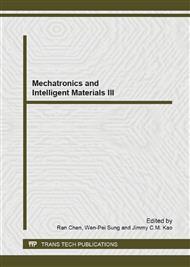p.1365
p.1368
p.1373
p.1379
p.1385
p.1389
p.1393
p.1397
p.1401
Hysteresis Characteristic Model of Suspension for Vehicle Dynamics Simulation
Abstract:
Suspension model can be divided into vertical hysteresis characteristic model and suspension guide-mechanism model according to its function. The relationship of the force and displacement is described in the existing vertical characteristic model, which does not consider the impact of the frequency. In the existing guide-mechanism model, the centerline of suspension K&C experimental data is used as the basis of the spindle position and attitude correction, without considering the hysteresis area. The problems above will affect simulation accuracy of vehicle dynamic. In this paper, hysteresis characteristic model of suspension is built. The vertical hysteresis model consists of spring, Maxwell element and Dehl friction unit. While in guide-mechanism model, if the hysteresis region is not obvious, considering the asymmetry, upper and lower borderlines are used to instead the centerline, and if the hysteresis characteristic is obvious, the Fancher formula is used to describe hysteresis range. Results showed out that the model has a high accuracy and is able to accurately describe hysteresis characteristics of suspension by comparison with the suspension system K&C experimental results.
Info:
Periodical:
Pages:
1385-1388
Citation:
Online since:
June 2013
Keywords:
Price:
Сopyright:
© 2013 Trans Tech Publications Ltd. All Rights Reserved
Share:
Citation:


